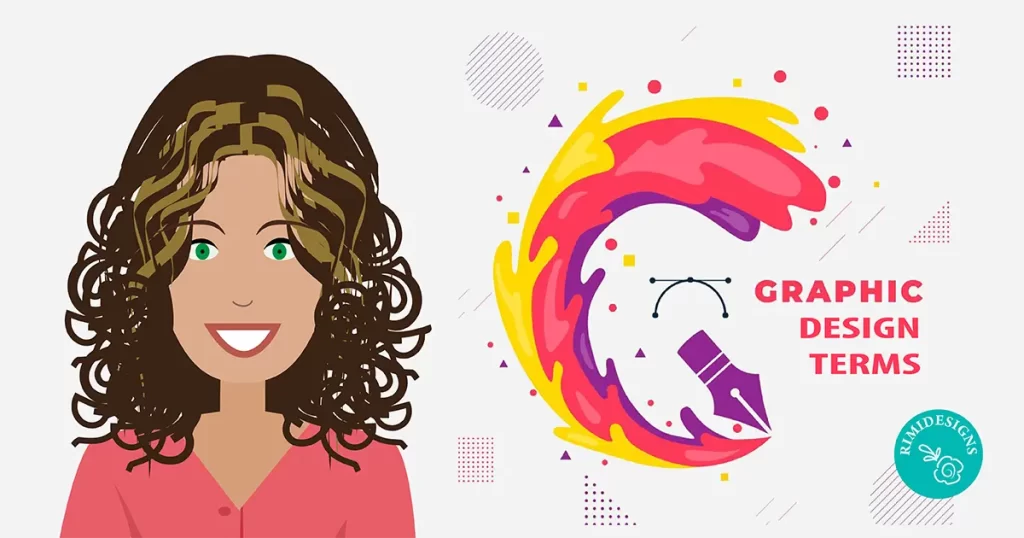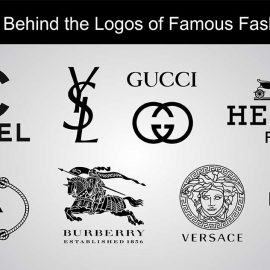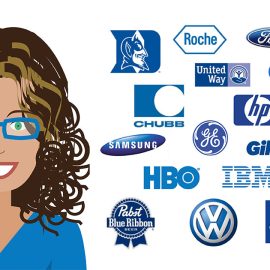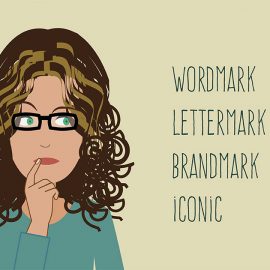
25 Graphic Design Terms You Need to Know
Whether you’re a budding graphic designer, a seasoned professional or simply someone interested in understanding design better, knowing the key graphic design terms can help you navigate the industry more effectively.
Here’s a comprehensive list of 25 graphic design terms you need to know.
1. Typography
Typography is the art and technique of arranging type to make written language legible, readable and visually appealing. It involves the selection of typefaces, point sizes, line lengths, line-spacing (leading) and letter-spacing (tracking).
2. Kerning
Kerning refers to the adjustment of space between individual characters in a piece of text. Good kerning ensures that letters are evenly spaced, improving the overall readability and aesthetic of the text.
3. Leading
Leading is the vertical space between lines of text. It is measured from the baseline of one line of text to the baseline of the line above it. Proper leading ensures that text is readable and not too cramped or too spread out.
4. Tracking
Tracking is similar to kerning, but instead of adjusting the space between individual characters, it adjusts the spacing uniformly over a range of characters. It affects the overall density and appearance of the text block.
5. Vector graphics
Vector graphics are images created using mathematical formulas to define shapes, lines and colours. Unlike raster graphics, which are made up of pixels, vector graphics can be scaled to any size without losing quality. Common vector graphic formats include SVG, AI and EPS.
6. Raster graphics
Raster graphics, or bitmap images, are composed of a grid of pixels, each representing a coloor. Common raster formats include JPEG, PNG and GIF. Raster images can lose quality when scaled up because they are resolution-dependent.
7. Resolution
Resolution refers to the amount of detail an image holds, typically measured in pixels per inch (PPI) or dots per inch (DPI). Higher resolution means more detail and better quality, important for both digital and print media.
8. CMYK
CMYK stands for cyan, magenta, yellow and key (black), which are the primary colours used in colour printing. Combining these colours in various ways produces the full spectrum of colours in printed materials.
9. RGB
RGB stands for red, green and blue, the primary colours of light used in digital displays. Screens combine these colours in various intensities to create the full range of colours seen on digital devices.
10. Pantone
The Pantone matching system (PMS) is a standardised colour reproduction system. Designers use Pantone colors to ensure colour consistency across different print and digital media. Each colour has a unique code for precise identification.
11. Gradient
A gradient is a gradual transition between two or more colours. Gradients can be linear, radial or angular, and they add depth and dimension to a design by creating a smooth blend from one colour to another.
12. Grid system
A grid system is a framework of intersecting horizontal and vertical lines used to structure content. It helps designers align elements consistently and create a balanced, cohesive layout.
13. White space
White space, or negative space, refers to the empty areas between design elements. It improves readability and focus, creating a clean and uncluttered look that enhances the overall design.
14. Hierarchy
Visual hierarchy is the arrangement of elements to show their order of importance. Designers use size, colour, contrast and placement to guide the viewer’s eye and highlight key elements first.
15. Bleed
Bleed is a printing term that refers to extending the design elements beyond the edge of the page. This ensures that no unprinted edges appear when the paper is trimmed to the final size, providing a professional finish.
16. Mockup
A mockup is a realistic model of a design used to present how the final product will look. It’s a valuable tool for visualising designs in real-world settings and for getting client feedback before production.
17. Brand identity
Brand identity encompasses all the visual elements that represent a brand, including logos, colour schemes, typography and imagery. It creates a consistent and recognisable image for the brand.
18. Logo
A logo is a graphic symbol or emblem used to identify a company, product or brand. It is a crucial part of brand identity and often includes both text and imagery.
19. Icon
An icon is a simplified graphic symbol used to represent an action, object or concept. Icons are used in user interfaces to aid navigation and provide quick, intuitive communication.
20. Thumbnail
A thumbnail is a small, reduced-size version of an image. Thumbnails are used to preview content quickly, especially in digital galleries, portfolios and search results.
21. Artboard
An artboard is a workspace in design software (like Adobe Illustrator) where designers create and organise their work. Multiple artboards can be used to manage different parts of a project within a single document.
22. Opacity
Opacity refers to the transparency level of an element. An element with 100% opacity is completely opaque, while lower opacity values make the element more transparent, allowing elements behind it to show through.
23. Layer
Layers are used in design software to separate different elements of a design. Each layer can be edited independently, allowing for non-destructive changes and complex compositions.
24. Pixel
A pixel is the smallest unit of a digital image or display. It’s a single point in a raster image, and many pixels together form the complete picture.
25. Contrast
Contrast refers to the difference between two or more elements in a design. High contrast can draw attention and create emphasis, while low contrast can create a more subtle effect.
Conclusion
Understanding these graphic design terms will enhance your ability to communicate effectively, create stunning designs and navigate the industry with confidence. Whether you’re working on branding, print or digital projects, this knowledge forms the backbone of your design expertise.



